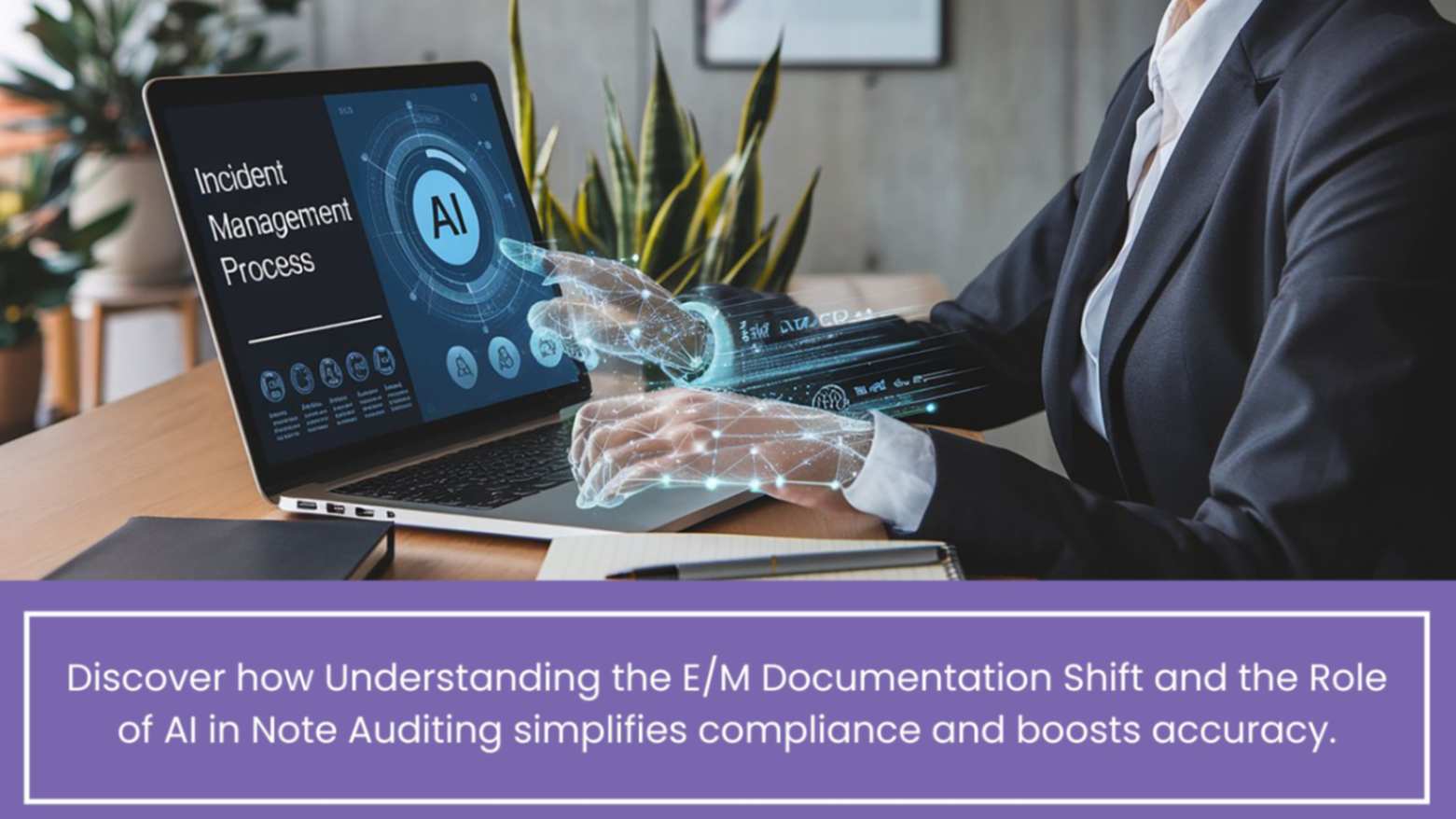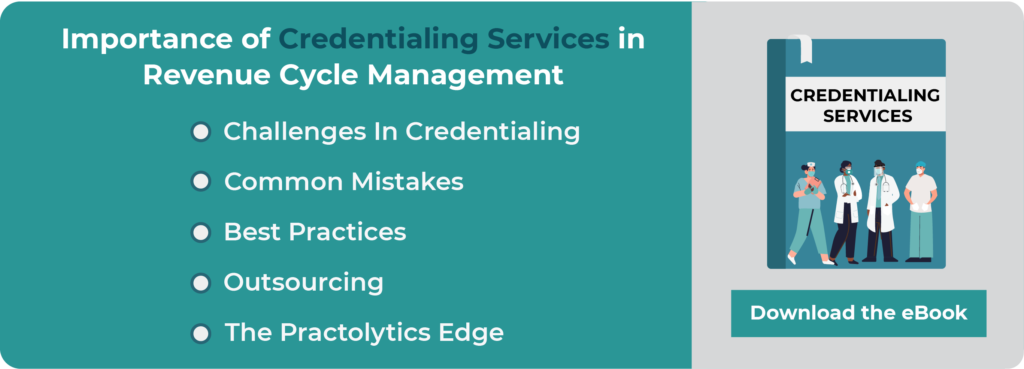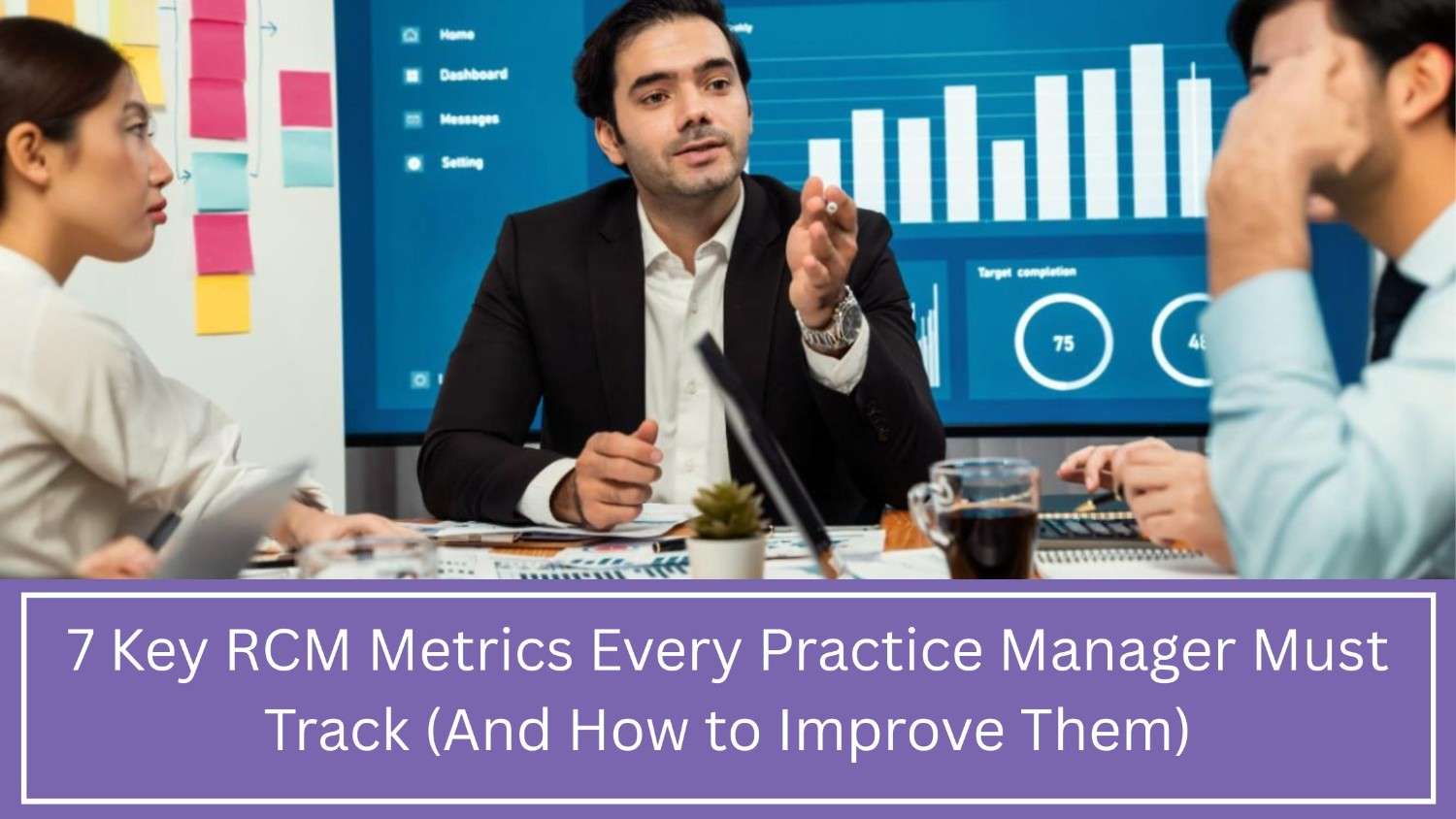Understanding E/M Documentation Shift and the Role of AI in Note Auditing
The healthcare landscape is evolving faster than ever — and E/M documentation guidelines are at the heart of that transformation. As E/M coding changes 2024 reshape how encounters are documented and billed, providers are turning to AI in medical documentation to simplify compliance and accuracy. In this guide, Practolytics breaks down what’s really changing, why it matters, and how note auditing software powered by AI can help your team stay one step ahead. Whether you’re a provider, coder, or compliance manager, Understanding E/M Documentation Shift and the Role of AI in Note Auditing will help you navigate this transition confidently.
Let’s be honest — E/M documentation has never been simple. Between ever-changing payer expectations, new E/M coding updates, and evolving medical coding compliance standards, staying compliant can feel like a full-time job.
For years, the focus was on quantity: the longer your note, the safer you were. But today, the rules have changed. It’s no longer about how much you write — it’s about how well your documentation supports your Medical Decision Making (MDM).
And here’s where AI in medical documentation is stepping in as a real game-changer. It’s not science fiction anymore — it’s becoming an essential part of every efficient healthcare organization’s workflow.
At Practolytics, we’ve been helping providers adapt to this shift for over two decades. We’ve seen firsthand how combining human expertise with technology leads to fewer denials, stronger compliance, and way less burnout.
Table of Contents
Evolution of E/M Documentation Standards
If you’ve been in healthcare long enough, you’ll remember the old E/M documentation guidelines — the 1995 and 1997 versions that focused heavily on history, exam, and medical decision-making.
These rules rewarded volume. The more details you added, the better your odds during audits. But over time, that approach led to what we now call “note bloat” — long, redundant records that said a lot but didn’t always communicate the real complexity of the case.
By 2021, CMS decided to simplify things. The focus shifted to time spent and MDM. The goal? To let providers spend more time with patients and less time typing.
Fast-forward to today — with the E/M coding changes 2024, the reform goes even deeper. It aims to create consistency across outpatient and inpatient settings and clarify gray areas around data interpretation and risk assessment.
That sounds great in theory, right? But in practice, it means a lot of teams are still figuring out how to align their workflows with these new expectations.
Persistent Challenges After the E/M Reform
Even though the reforms were designed to make life easier, they also introduced some new challenges — especially for billing and auditing teams.
Here are the most common pain points we see across practices:
- Inconsistent interpretation of what counts as “moderate” vs. “high” complexity in MDM.
- Heavy reliance on Electronic Health Record (EHR) templates that can lead to medical documentation errors or repetitive content.
- Auditors and payers having different opinions on what justifies a certain E/M level.
- Manual chart reviews eating up hours of coder time.
Basically, while documentation got simpler on paper, compliance got trickier in real life.
That’s why so many organizations are turning to note auditing software and AI-powered clinical documentation improvement tools to take the guesswork out of the process.
Rise of AI in Medical Documentation and Auditing
Artificial Intelligence (AI) might sound intimidating, but in healthcare documentation, it’s surprisingly practical. Think of it as a super-fast, ultra-consistent auditor who never gets tired.
AI in medical documentation can read, understand, and analyze clinical notes at scale. It checks for missing MDM components, unsupported diagnoses, and patterns that might increase audit risk.
Modern clinical note audit tools can even integrate with your EHR to review notes in real time — providing suggestions that help providers strengthen documentation before submission.
For example:
- If a note says “patient stable,” but the risk factors suggest otherwise, AI will flag that.
- If you’ve marked “high risk” but documentation doesn’t support it, AI prompts you to clarify.
- If your coding pattern consistently leans toward higher levels, it helps you validate those choices with stronger evidence.
At Practolytics, we use similar AI-powered clinical documentation improvement tools to help our clients detect compliance gaps early and reduce costly payer audits.
How AI Streamlines E/M Note Auditing?
Let’s break down how AI actually helps in the auditing process — beyond the buzzwords.
- Automated Review at Scale- AI can analyze hundreds (or thousands) of notes in seconds. It doesn’t just look for typos — it understands structure, context, and compliance based on E/M documentation guidelines.
- Smarter Medical Decision-Making Analysis- Through Natural Language Processing (NLP), AI understands the reasoning behind your medical decisions. It connects the dots between diagnoses, treatment plans, and documented risks.
- Spotting Inconsistencies Instantly- Ever documented a diagnosis in one section but forgot to update it elsewhere? Happens to everyone. AI in medical documentation catches those mismatches before they cause trouble.
- Reducing Human Error Without Replacing Humans- The beauty of note auditing software is that it assists, not replaces. AI frees up coders to focus on complex charts while handling routine reviews automatically.
- Predictive Learning- Over time, AI identifies recurring issues in your documentation patterns — helping teams refine workflows, improve EHR documentation best practices, and train staff more effectively.
With these capabilities, E/M chart audits become less about catching mistakes and more about continuous improvement.
Human-AI Partnership: Why Balance Matters?
One question we often get is: “Will AI replace coders and auditors entirely?”
The short answer — no.
AI is incredible at pattern recognition, but it lacks clinical judgment. It can tell you what’s missing in your documentation, but it can’t always understand why it’s missing.
That’s where human expertise still matters. Coders and auditors bring empathy, nuance, and critical thinking — qualities AI can’t replicate.
At Practolytics, we believe in a hybrid model: AI does the heavy lifting, and humans guide interpretation. Together, they create the perfect balance of speed, accuracy, and ethical oversight.
What AI Has Changed Already?
Here’s what we’re seeing across practices that have adopted AI in note auditing:
- Faster audits: What used to take days now takes hours.
- Fewer denials: When your documentation consistently aligns with E/M coding updates, payers have less room to dispute claims.
- Better compliance confidence: Teams know their documentation meets regulatory standards before sending it out.
- Happier providers: Less administrative pressure means more time for patient care — which was the entire point of E/M reform in the first place.
Proactive Compliance Over Reactive Correction
The healthcare industry is moving toward proactive compliance. Instead of fixing errors after claims are denied, AI-powered note auditing software helps prevent errors at the documentation stage.
It’s a shift from “let’s fix it later” to “let’s get it right the first time.”
And as payers themselves adopt AI tools for claim auditing, providers using similar technology stay one step ahead. It’s not about competing with machines — it’s about using them strategically to protect revenue and reputation.
Conclusion:
The E/M documentation shift isn’t just another compliance update — it’s a complete mindset change. Documentation today must reflect thoughtful, evidence-based decision-making — not just words on a page.
By embracing AI in medical documentation and clinical note audit tools, providers can create cleaner, smarter, and more compliant records.
At Practolytics, our mission is to help you navigate this evolution with confidence. We blend two decades of experience with cutting-edge tech to make compliance simpler, audits smoother, and outcomes better. Because when documentation works smarter, everyone wins — from providers to payers to patients.
Why are payers increasingly using AI for note auditing?
Payers use AI in note auditing to identify upcoding, missing data, and inconsistent risk documentation faster. It’s about accuracy, not punishment — ensuring providers get reimbursed fairly for properly documented services.
What specific things is AI looking for when auditing my clinical notes?
AI looks for missing or unsupported MDM elements, incomplete risk assessments, mismatched diagnoses, and medical documentation errors that could affect coding levels or compliance.Is relying heavily on EHR templates and canned text risky under AI auditing?
Yes. Overusing Electronic Health Record (EHR) templates can trigger red flags. AI can spot repetitive or copied language that doesn’t match the case context — a major risk for audits.
Will AI flag accurate, compliant documentation as an error?
Not if your documentation is structured correctly. AI focuses on inconsistencies, not punishing detailed notes. It’s designed to support compliance, not undermine it.
How does the MDM component of “risk” need to be documented to satisfy AI?
Describe your clinical reasoning clearly. Show why you classified the patient’s situation as moderate or high risk. AI looks for logical connections — the “story” behind your coding decisions.
Read More – Medical Credentialing Services: A Guide for Healthcare Providers






